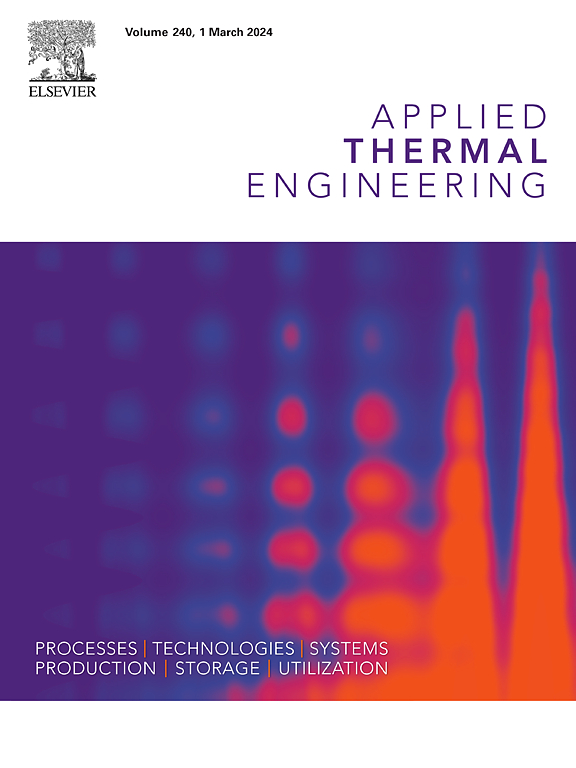660 兆瓦锅炉中污泥与煤燃烧的燃烧特性和氮氧化物释放量
IF 6.9
2区 工程技术
Q2 ENERGY & FUELS
引用次数: 0
摘要
本文利用 CFD 分析了在 660 兆瓦切向燃烧锅炉中污泥含水率和掺烧比对与煤共同燃烧时的燃烧特性、炉温分布和氮氧化物释放的影响。当污泥含水率从 10% 增加到 30% 时,燃料中的水分在初始燃烧过程中迅速释放并吸收反应热,导致主燃烧区温度降低 2.8%,热通量密度逐渐降低,同时水的存在导致不完全燃烧加剧,导致氮氧化物转化率增加。随着污泥掺混率从 5 % 增加到 25 % 以及水量的增加,主燃烧区的燃烧温度降低了 4.0 %,整个炉膛和 MBR 区域的热流密度显著降低,分别降低了 6.43 % 和 12.78 %。然而,污泥中的氮含量远高于煤,燃烧过程中产生的燃料型氮氧化物急剧增加,导致锅炉出口氮氧化物增加了 35.4 %。合理选择污泥掺混比例和含水率是锅炉协同燃烧需要考虑的关键问题。本文章由计算机程序翻译,如有差异,请以英文原文为准。
Combustion characteristics and NOx release of sludge combustion with coal in a 660 MW boiler
This article analyses the effects of sludge moisture content and blending ratio on combustion characteristics, furnace temperature distribution and NOx release during co-firing with coal in a 660 MW tangentially fired boiler using CFD. When the sludge water content increases from 10 % to 30 %, the water in the fuel is rapidly released during the initial combustion process and absorbs the reaction heat, resulting in a 2.8 % decrease in the temperature of the main combustion zone and a gradual decrease in the heat flux density, while the presence of water leads to the intensification of the incomplete combustion, resulting in the increase of the NOx conversion rate. With the increase of sludge blending ratio from 5 % to 25 % and the increase of water, the combustion temperature in the main combustion zone decreased by 4.0 %, and the heat flow density decreased significantly in the whole furnace and MBR area, by 6.43 % and 12.78 %, respectively. However, the nitrogen content present in the sludge is much higher than that of coal, and the fuel-based NOx produced by the combustion process increased dramatically, which led to the boiler exit NOx increasing by 35.4 %. Reasonable selection of sludge blending ratio and water content is a key issue to be considered for boiler co-combustion.
求助全文
通过发布文献求助,成功后即可免费获取论文全文。
去求助
来源期刊

Applied Thermal Engineering
工程技术-工程:机械
CiteScore
11.30
自引率
15.60%
发文量
1474
审稿时长
57 days
期刊介绍:
Applied Thermal Engineering disseminates novel research related to the design, development and demonstration of components, devices, equipment, technologies and systems involving thermal processes for the production, storage, utilization and conservation of energy, with a focus on engineering application.
The journal publishes high-quality and high-impact Original Research Articles, Review Articles, Short Communications and Letters to the Editor on cutting-edge innovations in research, and recent advances or issues of interest to the thermal engineering community.
 求助内容:
求助内容: 应助结果提醒方式:
应助结果提醒方式:


